Water Saving Tips
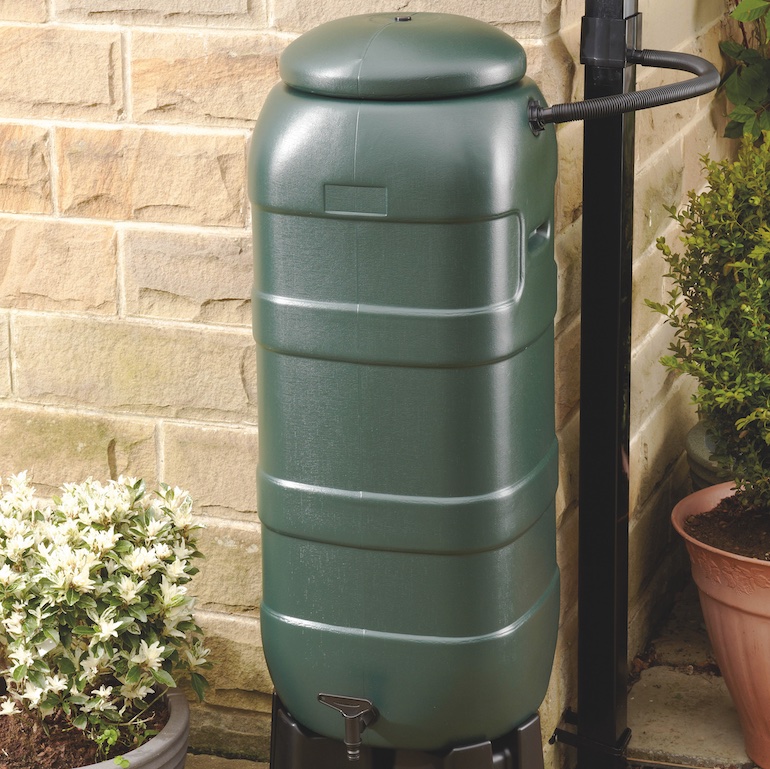
A good water butt is a must-have for any garden or allotment
Image: Space Sava Water Butt from Thompson & Morgan
With increasingly hot summers it’s vital to keep an eye on how much water is used in our gardens and allotments. The good news is there are lots of garden irrigation and watering tools to help. Here are ten top tips to help you use less water - protecting the environment and saving money in the process!
1. Improve your soil
Improve soil by digging in lots of well-rotted manure or home-made compost every spring. The more organic matter it contains, the better it will retain moisture. If that sounds like hard work, simply spread a thick layer of compost across your borders in spring (while the ground is moist), and let the worms pull it into the soil for you.
Help individual plants by creating a wide planting hole and lining it with perforated polythene. Mix the excavated soil with plenty of compost or well rotted manure before backfilling it. The polythene liner will prevent water from draining away so quickly, and retain moisture around the plant’s roots.
2. Work with nature
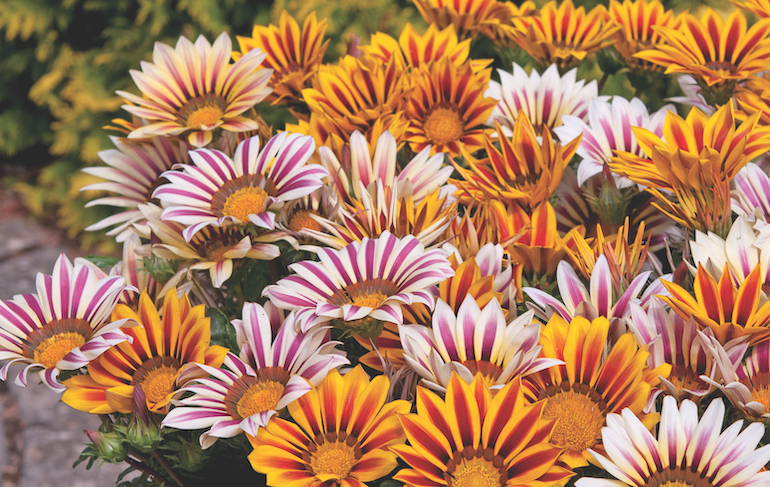
Choose drought-tolerant plants like gazanias
Image: Gazania 'Tiger Stripes Mixed' from Thompson & Morgan
Don't plant moisture-loving plants on dry, stony soils. Instead, choose plants that enjoy dry conditions. Drought resistant plants often have specially adapted foliage that helps them to cope with water shortages. Look out for silver, furry, waxy or glossy leaves. Fleshy succulent plants and aromatic foliage are also telltale signs that a plant will cope well with water shortages. For more information on drought-proof gardening, visit our dedicated hub page.
3. Mulch, mulch, mulch
Mulches prevent water evaporating from your soil by covering the surface. Better still, they keep the weeds down and look really attractive too. Always apply mulch between autumn and spring while the soil is still moist. Gravel, pebbles and bark chips make an attractive covering, while a layer of well-rotted compost will help to feed your plants too. If aesthetics aren’t a concern, try planting through a sheet of polythene or landscape fabric.
4. Collect rainwater where you need it
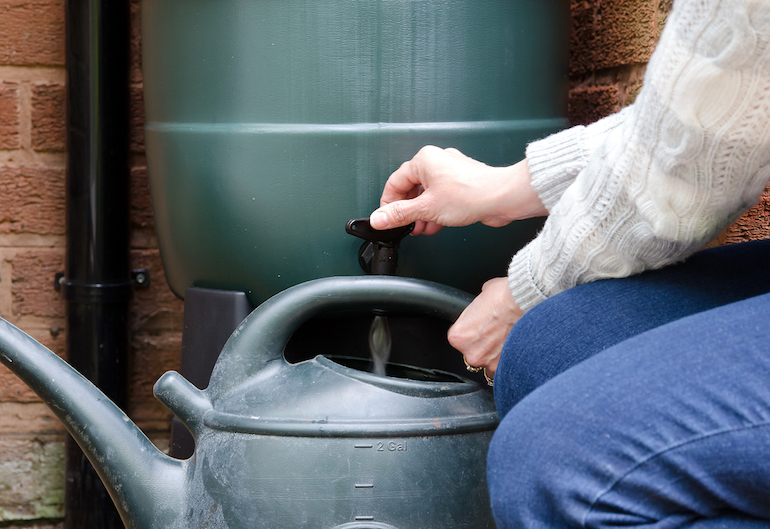
Water butts help you save money when using them in your garden
Image: Shutterstock
There are lots of environmental benefits to collecting rainwater, and of course it's completely free! Get yourself several water butts and position them where they’ll be the most helpful - behind the greenhouse, on the patio, or close to the vegetable patch. You can also collect grey water from the bath or shower to water your plants.
5. Water wisely
Water in the morning before the heat of the day sets in. An early watering routine will reduce water loss through evaporation, so your plants will get the full benefit of the water that you apply. Morning watering will also give your plants plenty of time to dry off before night fall, reducing the likelihood of slug damage and fungal disease. Don’t waste water by wetting the foliage - always aim for the base of the plant.
6. Use water retaining gel
Add water retaining gel to the compost when you plant up your hanging baskets and containers. These little crystals swell to create reservoirs of moisture that help to keep plant roots moist all day long.
7. Be selective
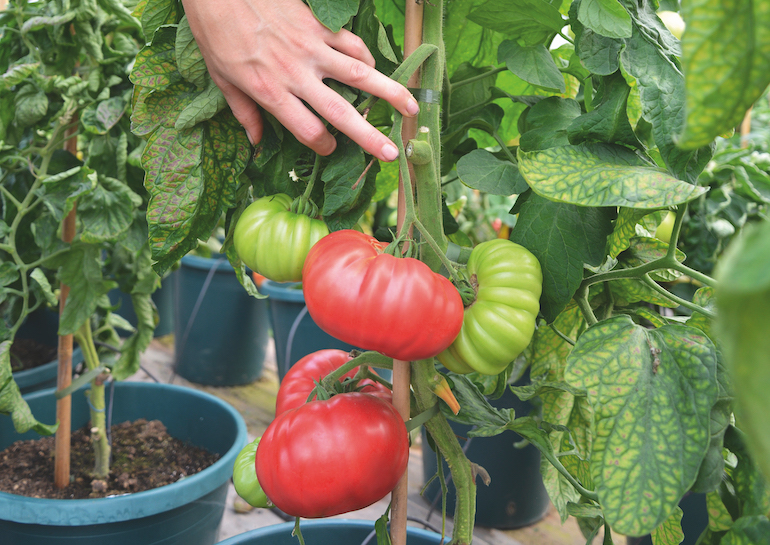
Water the neediest plants first
Image: Tomato 'Crimson Blush' (grafted) from Thompson & Morgan
Not all plants need the same amount of water every day, so you can afford to be selective. Fruit and vegetable crops are worth the effort, but lawns are surprisingly resilient so don't worry if they turn brown. In fact, if you let them grow a little longer, lawns can usually cope well without extra irrigation.
Prioritise containers, hanging baskets and anything newly planted. Try setting up an automated irrigation system to help you target vulnerable plants. Good establishment will help plants to cope with dry conditions in future years.
8. Water well when required
A really good soaking every few days (or when the soil becomes dry) will help plants to develop a deep healthy root system. Avoid watering lightly every day as this encourages the plant roots to grow near the surface of the soil, making them much more vulnerable to drought.
9. Choose your containers with care
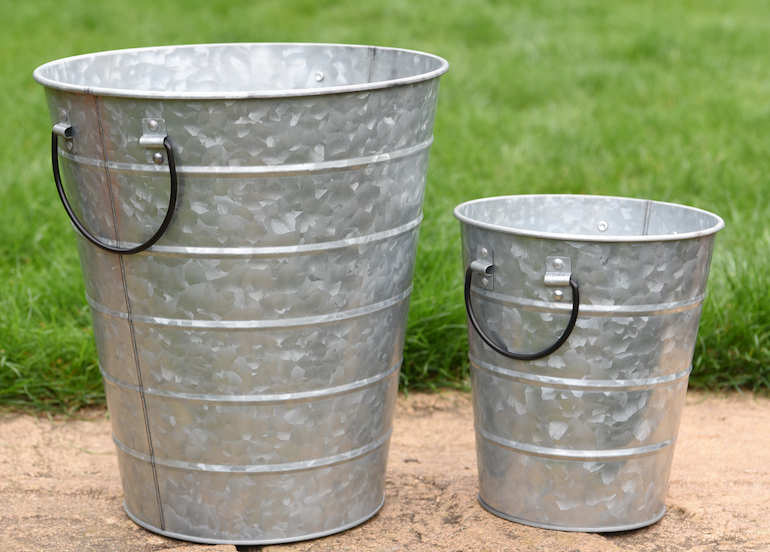
Choose your pots carefully and opt for non-porous materials on hot patios
Image: Rustic planters from Thompson & Morgan
Patio containers always dry out quickly, but you can make your watering more efficient by choosing plastic or glazed pots instead of unglazed terracotta which is very porous. Group pots together so that they can benefit from the shade created by one another's foliage. Check that plants have not become rootbound - large root systems require extra water. Transplant them into larger pots if necessary to help the soil stay moist for longer.
10. Remove the competition
Keep on top of weeds in the garden as these will grow quickly and compete with your plants for valuable moisture.
More top water saving tips
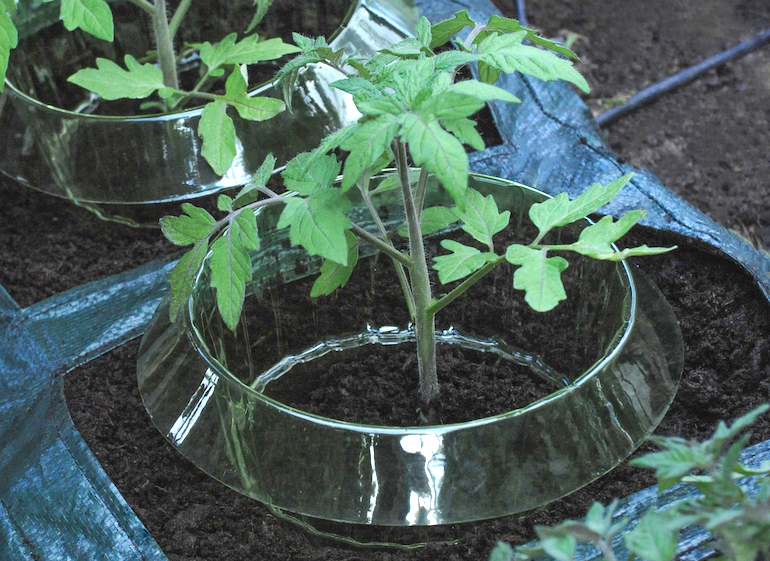
Try using water collars to create a local reservoir
Image: Garden Grow Snail Collar from Thompson & Morgan
Some of our customers have generously shared their own water-saving tips to preserve this precious resource during long periods of hot, dry weather. From installing water butts to retaining water from the shower, do your bit for the environment by trying some of their ideas this summer.
Paul Beard - "One good tip is to keep on with the weeding - it may be laborious but at least then they are not taking water from your special plants."
Lynn Fancy - "I water my plants with water from my condenser tumble dryer!"
Angela Lee-Smith - "As a retired gardener with 35 years horticultural experience i have always thought that we have to recycle water from our houses. The victorians had the right idea even in those days in my gardening experience with old houses there was usually a water tank under the ground from which they must have watered their gardens. Therefore, it would be a simple enough thing to put a tank under the patio though expensive but so is replacing our precious plants that need lots of water when it is dry. The tank would be supplied with waste water from the house which would normally go down the sewer - not to do this is false economy if dry weather is going to be the norm when the garden needs water."
Laura Dron - "My large shed has a sloping roof. Behind it, to screen for privacy, is a tall bamboo in a large pot to prevent it rampaging. Next to this is an open plastic dustbin with wire mesh across it to prevent creatures drowning. Rain fills the dustbin easily. Thick fibrous string/thin rope runs from it and winds down inside the bamboo's soil. It is kept continuously watered by osmosis. One could perfect this by running the string through piping to stop evaporation."
Mary Lowry-Martin - "Water in the evening so the heat of the day doesn't evaporate it before it can soak in. Also mulch plants all around the roots with home made compost helps. Having to carry the water rather than use a hose as at most allotments is a great motivator for water to only go where it's needed!"
Marcus Nixon - "I collect the water from the shower that is running whilst I wait for it to warm up. It's only a little, but it all helps."
Matthew Eddy - "I've been filling my water butt up with the left over washing up water, the fairy liquid also helps to kill a few bugs!"
Christina Goozee - "Collect all "Grey" water from showers & baths does wonders against the green fly too"
Liz Farnworth - "Water saving tips, have showers not baths. Put a brick/filled plastic bottle in your loo cistern. Report any seen water seepage/leaks to the relevant local authority. Don't run taps unnecessarily. Get yourself a water butt or two."
Cathy Johnson - "I've covered the patio with buckets and washing up bowls and have collected a large watering can full in the last 24 hours - every little helps!"
Harrod Horticultural - "Definitely use ground level irrigation kits for efficient and evaporation-free watering. The soaker hose is ideal!"
Carol Cranston - "Place containers around your garden/allotment so that you have a source of water near to your plants. It is suprising how soon they fill up. Take advantage of any sloping roofs on out-buildings. Fit gutters and pipes leading into containers. Containers can feed other containers, so long as one is below the feeder one. Use pipes for one to the other. Save money by utilisng other things, i.e. old vaccum pipes or plumbing pipes. Look at things you intend to throw away...........could they be used for anything else? I find the answer is usually, yes! "

Written by: Sue Sanderson
Plants and gardens have always been a big part of my life. I can remember helping my Dad to prick out seedlings, even before I could see over the top of the potting bench. As an adult, I trained at Writtle College where I received my degree, BSc. (Hons) Horticulture. After working in a specialist plantsman's nursery, and later, as a consulting arboriculturalist, I joined Thompson & Morgan in 2008. Initially looking after the grounds and coordinating the plant trials, I now support the web team offering horticultural advice online.
Sign Up For Exclusive Special Offers




© 2025 Thompson & Morgan. All rights reserved. A division of Branded Garden Products Limited.
Sign up for exclusive offers!



